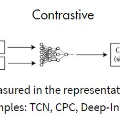Animal pose estimation has recently come into the limelight due to its application in biology, zoology, and aquaculture. Deep learning methods have effectively been applied to human pose estimation. However, the major bottleneck to the application of these methods to animal pose estimation is the unavailability of sufficient quantities of labeled data. Though there are ample quantities of unlabelled data publicly available, it is economically impractical to label large quantities of data for each animal. In addition, due to the wide variety of body shapes in the animal kingdom, the transfer of knowledge across domains is ineffective. Given the fact that the human brain is able to recognize animal pose without requiring large amounts of labeled data, it is only reasonable that we exploit unsupervised learning to tackle the problem of animal pose recognition from the available, unlabelled data. In this paper, we introduce a novel architecture that is able to recognize the pose of multiple animals fromunlabelled data. We do this by (1) removing background information from each image and employing an edge detection algorithm on the body of the animal, (2) Tracking motion of the edge pixels and performing agglomerative clustering to segment body parts, (3) employing contrastive learning to discourage grouping of distant body parts together. Hence we are able to distinguish between body parts of the animal, based on their visual behavior, instead of the underlying anatomy. Thus, we are able to achieve a more effective classification of the data than their human-labeled counterparts. We test our model on the TigDog and WLD (WildLife Documentary) datasets, where we outperform state-of-the-art approaches by a significant margin. We also study the performance of our model on other public data to demonstrate the generalization ability of our model.
翻译:动物在生物学、动物学和水产养殖中应用了动物的外形估计,因此,动物的外形最近才成为焦点。深层次的学习方法有效地应用于人类的外形估计。然而,对动物应用这些方法的主要瓶颈在于没有足够数量的标签数据。尽管有大量的未贴标签数据可以公开提供,但将每个动物的大量数据贴上标签在经济上是不切实际的。此外,由于动物王国的形形体种类种类繁多,因此,跨区域的知识转移是无效的。鉴于人类大脑能够识别动物的外形而不要求大量标签数据,因此,我们利用未经监督的学习方法从现有的、未贴标签的数据中解决动物的表面识别问题是很合理的。在本文中,我们引入了一个新的结构,能够识别多种动物的外形。我们这样做的方式是(1)从每张图像中移除背景资料,并在动物体内使用一种模型检测算法,(2)跟踪边缘的像素运动,并进行成块形组的组合组合,在部分上,我们利用非受监督的外形形体学方法,利用不力的学习动物的外形形体识别数据,我们更深层的底部,我们用来测量的底部数据,让我们的底部的底部,我们得以对底部数据进行对比的底部的底部的底部,我们测量的底部的底部的底部的底部数据,让我们的底部,我们得以对底部显示的底部显示的底部,我们测量的底部数据,从而显示的底部,我们测量的底部显示的底部显示的底部的底部,我们测量,从而显示的底部的底部的底部的底部的底部,让我们的底部的底部的底部的底部的底部,让我们的底部的底部的底部的底部,让我们的底部的底部的底部的底部的底部的底部的底部的底部的底部的底部的底部的底部的底部的底部的底部的底部的底部的底部的底部的底部的底部显示的底部的底部显示的底部显示的底部,让我们的底部显示的底部的底部的底部的底部,让我们的底部,我们的底部的底部,


